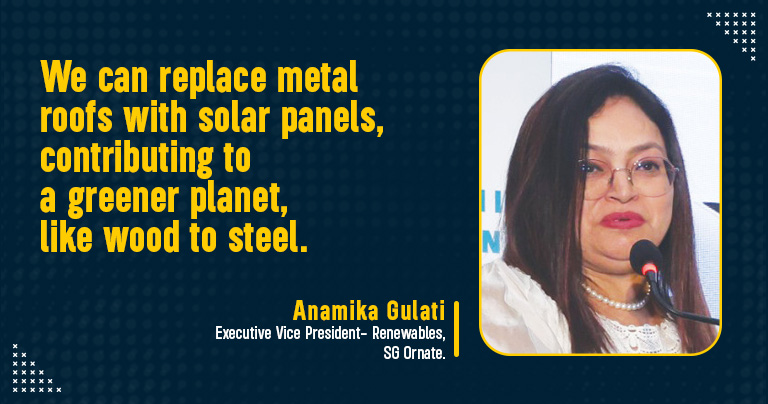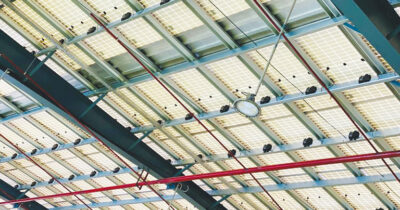Solar roofs to fuel demand for energy-efficient and affordable roofing solutions
By Edit Team | May 9, 2023 12:45 pm SHARE

During an interview with B2B Purchase, Anamika Gulati, Executive Vice President for Renewables at S G Ornate, highlighted metal roofs’ environmental and energy-efficient advantages and emphasised their renewed emphasis on introducing solar roofs.
As we have entered renewables and know that solar energy is the future, we exhibited the revolutionary concept of integrated solar roofs during the show.
How is sustainability driving demand for your solutions?
From a roofing perspective, India’s ambitious goal of achieving 500 GW of renewable energy capacity by 2030 will require a significant investment of at least 2.44 trillion rupees. This investment will create a significant demand for innovative solar solutions and technologies, making it a suitable time for the roofing industry to contribute towards sustainable energy generation. Our concept is wellpositioned to play a crucial role in achieving this goal by offering roofing solutions that harness solar power and contribute towards India’s renewable energy targets.
Which materials are primarily used for commercial, industrial, or public spaces?
Considering the roofing context, particularly the Roof India Expo 2023, we can see that steel or metal is the primary material used for commercial and industrial roofing systems. However, producing one tonne of steel generates 1.85 MT of carbon emissions. Fortunately, we have found a solution to replace metal sheet roofs with solar panels. This is a significant contribution to promoting a green environment. It is similar to the way many applications of wood were replaced by steel, which was a major movement towards a greener planet. Now, replacing even a small portion of steel with solar panels would be a double treat for the planet.

What are the difficulties in matching cost differences while meeting the demand for long-term, energy-efficient products and solutions?
Yes, matching the cost difference is a big challenge. Still, to attain the ‘next level of energy efficiency,’ a couple of parameters must be considered seriously, such as diversifying energy efficiency resources, ensuring the persistence of energy efficiency savings, and integrating energy efficiency savings with a carbon reduction framework. If this can be achieved, then the challenge of matching the cost difference will not have a viable impact.
What are the defining parameters for choosing metal for structures? How does the pricing factor support the choice of metal?
Some of the important characteristics of materials are strength, durability, flexibility, weight, resistance to heat and corrosion, ability to be cast, welded, or hardened, machinability, electrical conductivity, etc., and on top of that, the climate and its capability to handle a natural crisis. That’s why for structure, nothing can be better than metal.
The success and increasing demand for INROOF from the house of APL Apollo & Ornate Group is a live example of how keen the industry is to adapt environmentally friendly concepts to replace conventional ones.
Cookie Consent
We use cookies to personalize your experience. By continuing to visit this website you agree to our Terms & Conditions, Privacy Policy and Cookie Policy.




































-20240213125207.png)

























